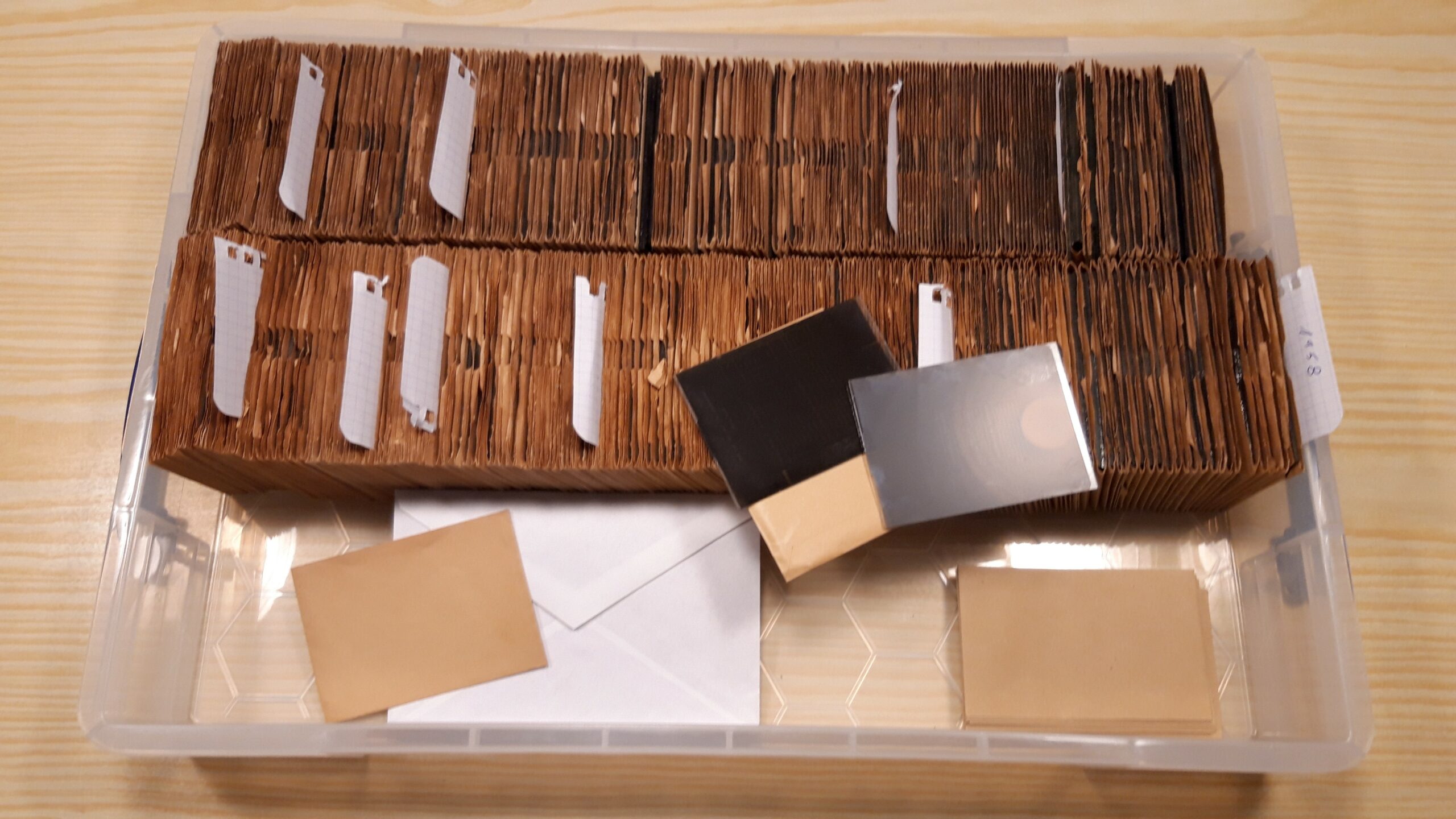VMH-Balen Project digitising negatives on glass
Last year, in September 2023, a former colleague offered me a set of photos from the VM site in Balen. I got the chance to buy this box of photo negatives on glass. It was estimated to be about 300 photos.
You can’t pass up an opportunity like that.
The photos are a follow-up of various projects from 1953 to the mid-1960s. Taking stock, it turned out to be as many as 544 photos. They are original negatives. 155 of these photos we already knew. The remaining 389 had not been seen until now.
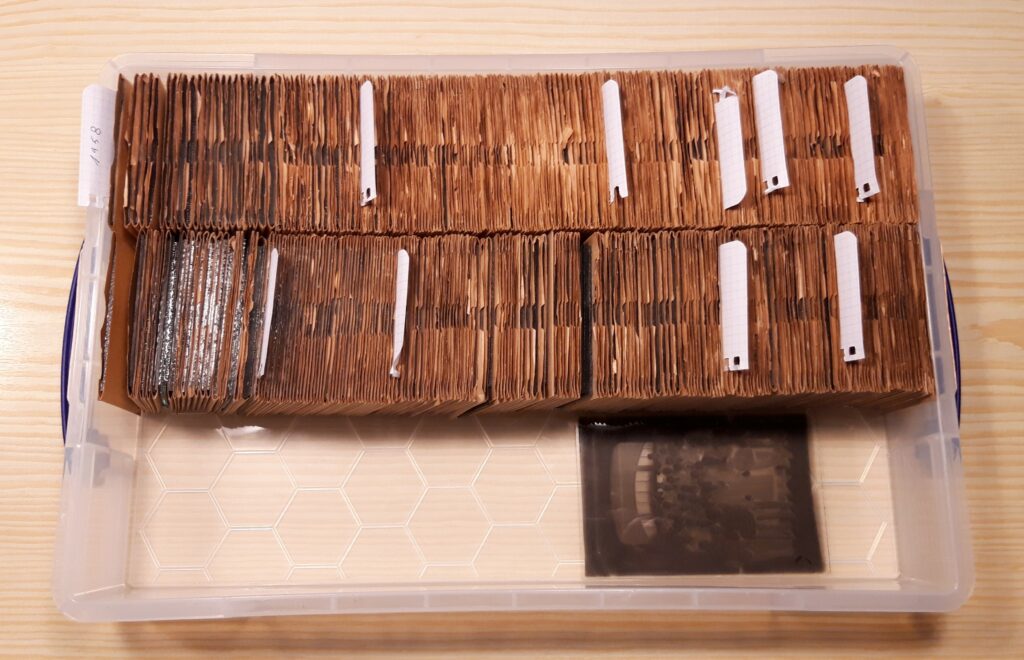
To know what we had, we first had to make an inventory of the photos. Fortunately, the period 1953-1965 is only just before I started at VM. I started in 1975 on the roasting plant. I remember many of the buildings standing before they were demolished. On the envelopes of the clichés was the subject and fortunately also the date that the photo was taken. That helped a lot.
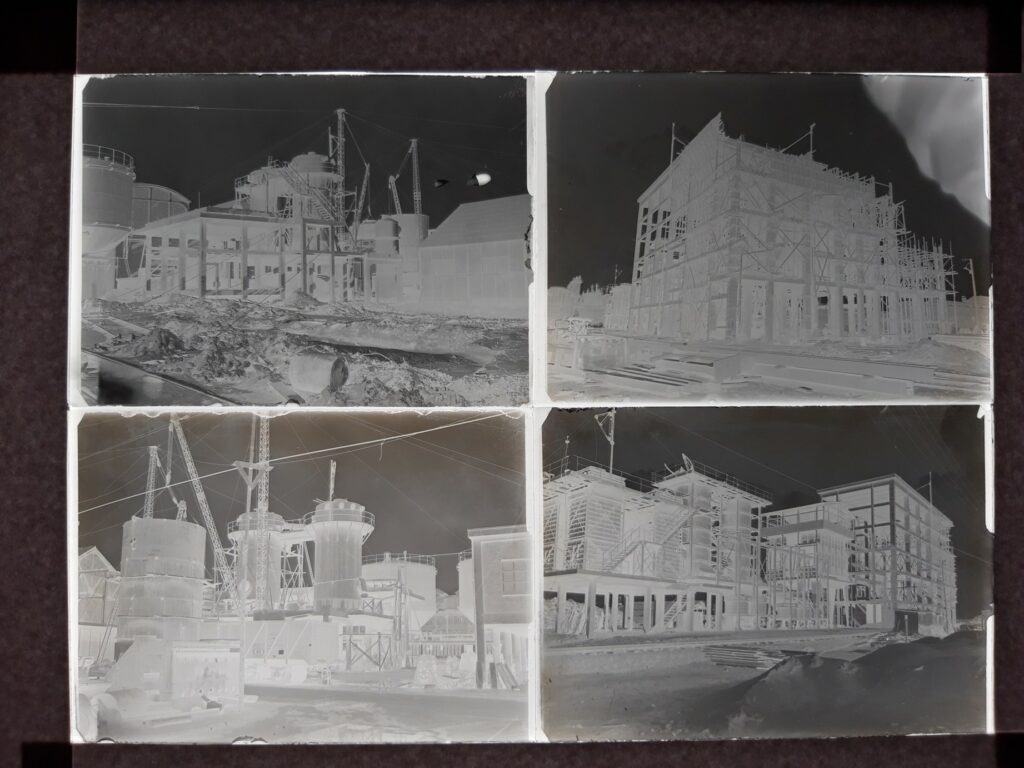
Then comes the inevitable administration. All photos were numbered and included in a spreadsheet. Then ordered by date. Now all that’s left to do is digitize. Photography of glass negatives was new to me. Negatives are photographed on a lightbox. I had bought one on the internet but it turned out to be totally unsuitable, too grainy. Sponsored by VMH, I bought a second one from the Kaiser brand, which had a finer structure. But not ideal yet. So I googled how others do this and by applying some useful tips I was off. You have to photograph them with the emulsion side up and a millimetre of space between the glass plate and the lightbox. I had to make a custom frame for that.
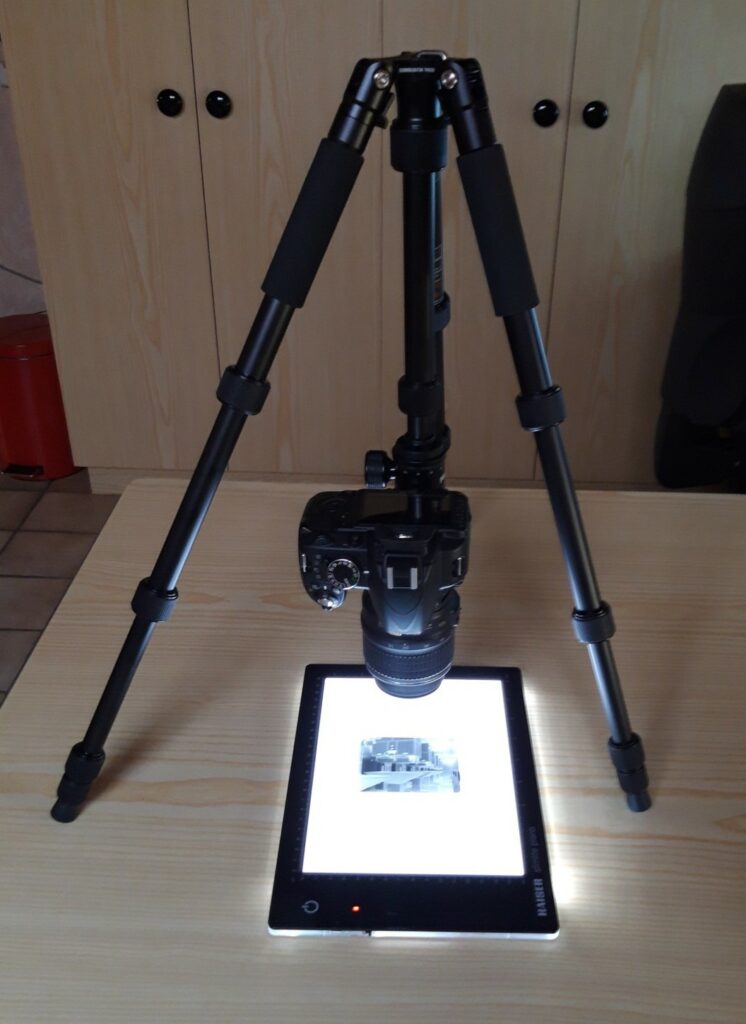
Normally, you must clean the glass panes one by one. This was very difficult and took a lot of time. When processing the first test series of 20 pieces, it turned out that it is much more efficient not to clean them and improve them digitally afterwards, so you don’t damage the negatives by cleaning them.
Then photographing as on the assembly line… 544 pieces, about 3 days. After that, all negatives on the computer were digitally positivized, mirrored, cropped and improved, the scratches and dust were removed and a VMH number assigned (speed about 10 per hour). They have now been added to our VMH photo archive.
What’s important to me is that there were a number of photos that were very helpful in correctly dating photos that we already had. There are also some pictures of experimental ovens that I hadn’t seen yet.
Last photo is a photo of the first fluidized bed furnace that rose from the ashes of the ruins of the previously collapsed hall of the Spirlet ovens. Like a phoenix.
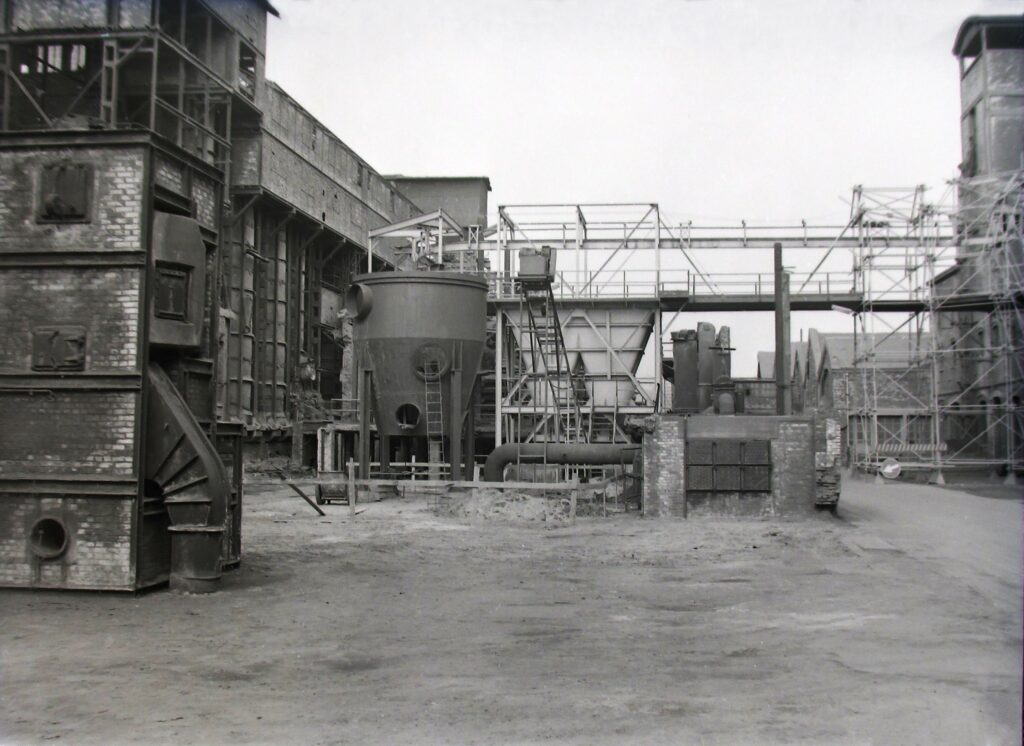
François Wouters VMH-Balen
2024-02-10


